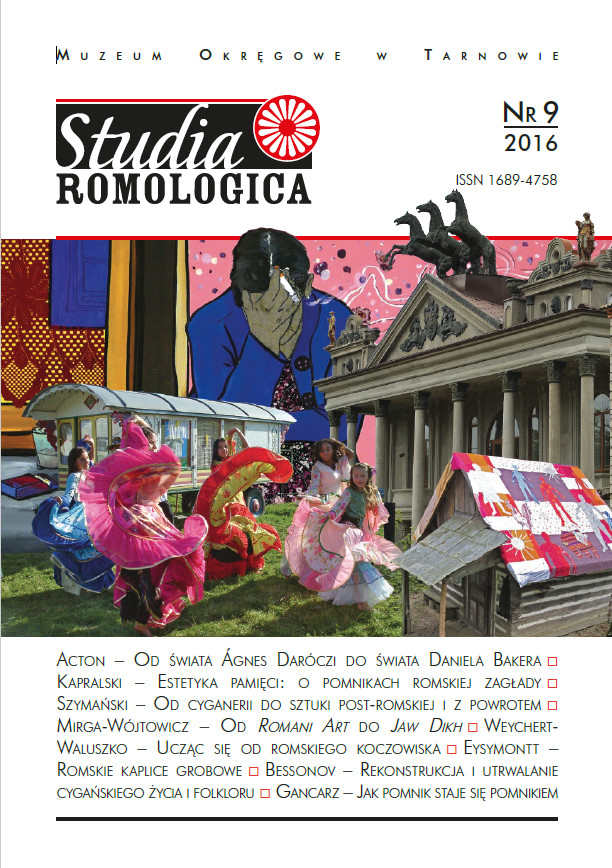Ucząc się od romskiego koczowiska
Learning from the Roma camp
Author(s): Monika Weychert-WaluszkoSubject(s): Anthropology, Social Sciences, Fine Arts / Performing Arts, Architecture, Visual Arts, Sociology, Culture and social structure , Ethnic Minorities Studies, Sociology of Art
Published by: Muzeum Okręgowe w Tarnowie
Keywords: Roma and Sinti; Roma camp; Romanian Roma in Poland, Wrocław; Roma art; art and architecture; temporary architecture; shadow architecture
Summary/Abstract: Roma from Romania have been setting their camps in Poland since the early 1990s, so for a quarter of a century now. Yet this phenomenon of inhabitation has not been too often subjected to theoretical or conceptual reflection. This essay focuses on the possible reasons of this exclusion: entrenched stereotypes that obscure the socio-economic background of Roma migrations, as well as on the significant difference between the permanent architecture of houses or housing schemes inhabited by Roma versus the temporary architecture of the camps. An analysis of cultural texts indicates a shared interest in this temporary dwellings on the part of the historical Situationists and contemporary Polish and Roma visual artists; the Dutch architect Constant’s utopia of nomadic cities belongs to the former. Today the architecture of Roma camps can be treated not only as a ‘shadow architecture’ excluded from the public discourse, but also as an inspiration and challenge for present-day thinking about housing design: low-cost, time-effective, in tune with ecological and recycling ideas.
Journal: Studia Romologica
- Issue Year: 9/2016
- Issue No: 1
- Page Range: 81-97
- Page Count: 17
- Language: English, Polish, Romany

